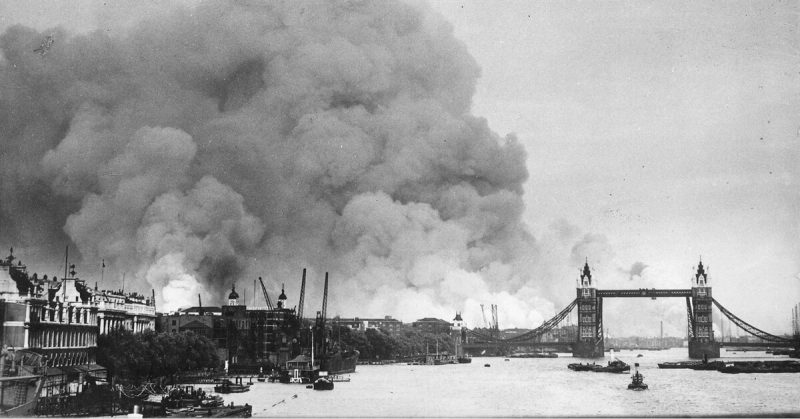The term ‘The Second Great Fire of London’ refers to the worst blitz to occur in the capital of Britain during World War Two. Over the course of a single night, German forces dropped more than 100,000 bombs over the City causing fires all over London. Many buildings were destroyed.
The event caused the largest continuous area of blitz destruction affecting an area bigger than the first Great Fire of London, which occurred in 1666. It took place on the night of December 29, 1940, between the hours of 6.15 pm and 9.45 pm. However, the aftermath continued for days.
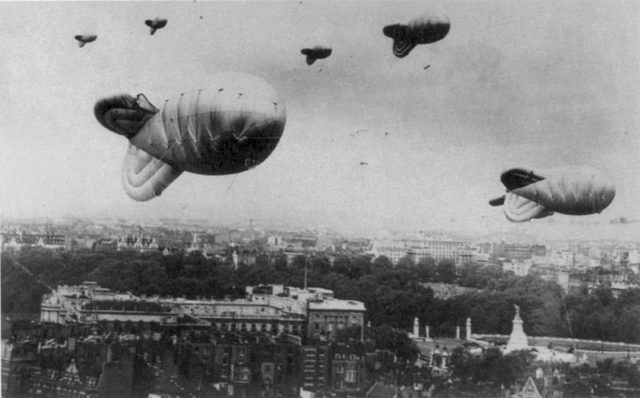
The Square Mile
London took an enormous hit that night, with entire streets being flattened. The Germans had targeted communication lines, train stations, bridges over the Thames River and the main telephony center on Faraday Street. More than 160 civilians were killed outright and more succumbed to their injuries and burns in the following days.
The Square Mile in the center contained 31 guild halls and 19 churches (including eight built by Sir Christopher Wren) which were all razed to the ground. Paternoster Row, in London’s publishing district, was also decimated. About five million books were destroyed in the fires.
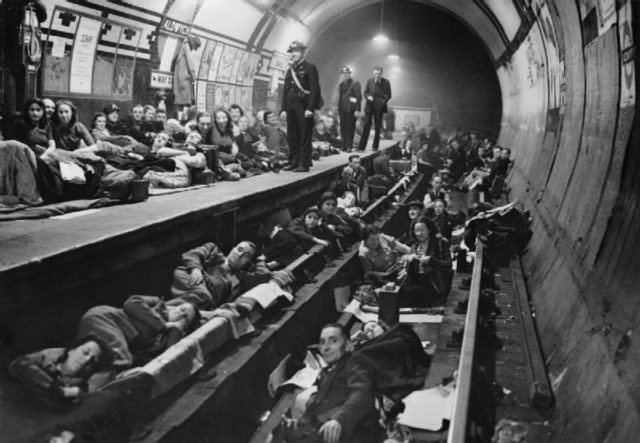
St Paul’s Cathedral had to be Saved
Prime Minister Winston Churchill stated, “St Paul’s must be saved at all costs.” The firefighters went to extreme measures to ensure the safety of the Cathedral. There was a dedicated group set up to protect it from the flames.
The St Paul’s Watch had initially been set up during WWI and was reformed in 1939. They were a multinational group noted for taking great personal risk to ensure the Cathedral maintained services daily throughout the war. They kept a log detailing the events from the war, including this attack.
Twenty-eight incendiary bombs landed on St Paul’s that night, but the quick and efficient work of the Watch ensured the building remained standing.
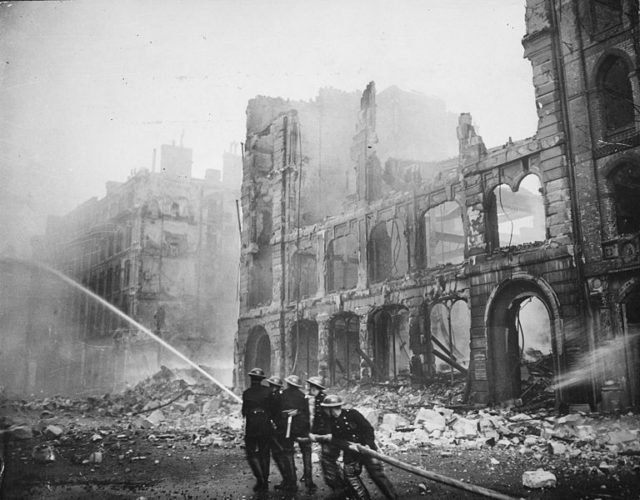
More than 1500 fires were started
The catchphrase, ‘The Second Great Fire of London’ came from an American reporter who telegraphed his office with the news. Firefighters and volunteers struggled to contain the flames as well as hundreds of unexploded bombs from the previous 113 nights of the blitz.
Miraculously the fires were mostly extinguished by 4 am the next morning, but some burned for days. London felt the effects of the bombing well into the next year as it recovered from the destruction.
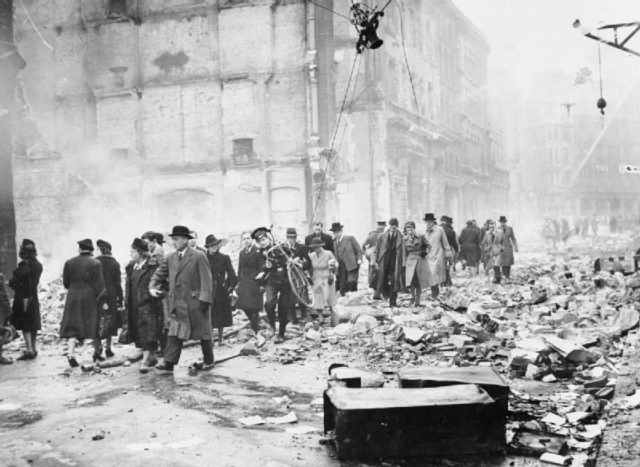
The attack was timed
The River Thames was at a low ebb when the flames were tearing their way through London causing the water hoses to become clogged with mud. There was also a ruptured water main reducing the water pressure.
Hundreds of volunteer firefighters fought to keep the flames contained. Men were manning the pumps and women were driving vans filled with petrol through the streets of London to ensure the pumps had sufficient fuel. Author Francis Becket wrote: “Driving vans laden with petrol through the flames that night was about as dangerous a job as you could do.”
Many of London’s historic buildings were saved that night, St Pauls Cathedral included. Fourteen firefighters lost their lives with a further 250 injured.
